Defenses for Spring 2022
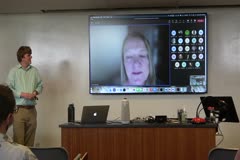
Examining the Impacts of Convective Environments on Storms Using Observations and Numerical Models
June 23, 2022
Sean Freeman
Convective clouds are significant contributors to both weather and climate. While the basic environments supporting convective clouds are broadly known, there is currently no unifying theory on how joint variations in different environmental properties impact convective cloud properties. The overarching goal of this research is to assess the response of convective clouds to changes in the…
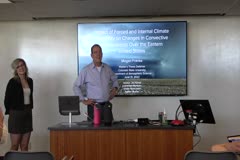
Impact of Forced and Internal Climate Variability on Changes in Convective Environments over the Eastern United States
June 21, 2022
Megan Franke
Hazards from convective weather and severe storms pose a serious threat to the continental United States (CONUS). Previous studies have examined how future projected changes in climate might impact the frequency and intensity of severe weather using simulations with both convection-permitting regional models and coarser-grid Earth system models. However, most of these studies have been limited…
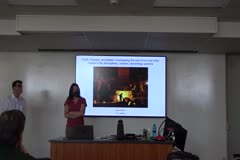
Earth, Humans, and Metals: Investigating the role of iron and other metals in the atmospheric, oceanic, and energy systems
June 13, 2022
Sagar Rathod
Metals such as copper and iron have formed an integral part of human civilization’s growth since the Bronze and the Iron ages. Of these metals, iron is of particular importance because of the roles it plays in the Earth system and because it is emitted in more quantity than other metals from human activities. Iron in the particle form affects the atmospheric radiative budget by absorbing…
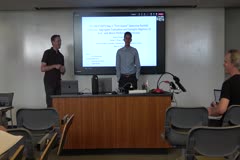
CSU-MLP GEFS Day-1 "First-Guess" Excessive Rainfall Forecasts: Aggregate Evaluation and Synoptic Regimes of Best- and Worst-Performing Forecasts
May 16, 2022
Jacob Escobedo
Forecasting for excessive rainfall, particularly flash-flood producing rainfall, is an important problem that remains difficult due to the relatively short temporal and small spatial scales at which they occur. One important operational product that highlights areas for potential excessive rainfall and flash flood occurrences is the Excessive Rainfall Outlook (ERO) issued by the NOAA Weather…
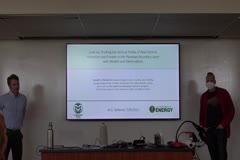
Probing the vertical profile of new particle formation and growth in the planetary boundary layer using a column model with surface- and aircraft-based observations
May 06, 2022
Sam O’Donnell
The process of new particle formation (NPF) and subsequent particle growth is an important contributor to cloud condensation nuclei (CCN) concentrations, and CCN have important implications for climate from their impact on planetary radiative forcings. While the ubiquity and importance of NPF is generally understood, the vertical extent and many of the governing mechanisms of NPF and particle…
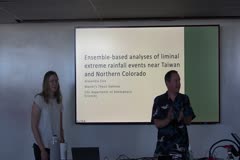
Ensemble-Based Analyses of Liminal Extreme Rainfall Events Near Taiwan and Northern Colorado
April 22, 2022
Ali Cole
Heavy rainfall is a phenomenon that impacts a variety of climates around the world, from the moisture-rich, tropical northwestern Pacific to the drier Northern Colorado plains. Improvements over decades of numerical weather prediction have allowed for increased accuracy in simulations of heavy rainfall cases, but there are still improvements yet to be made. This thesis, in conjunction with the…
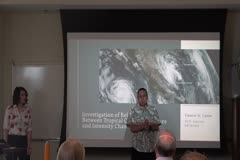
Investigation of Relationships Between Tropical Cyclone Structure and Intensity Change
April 18, 2022
Ellie Casas
Rapid intensification (RI) of a tropical cyclone (TC) remains one of the largest sources of intensity forecast error, due in part to internal dynamics that are complex and less well understood. Part of the difficulty in improving understanding of RI is due to complex interactions across a wide range of TC intensities, shapes, and sizes. In this doctoral study, I investigate these interactions…
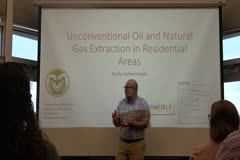
Impacts of oil and natural gas development and other sources on volatile organic compound concentrations in Broomfield, Colorado
March 28, 2022
Emily Lachenmayer
In 2017 substantial new oil and natural gas (ONG) extraction was approved by the City and County of Broomfield (CCOB). A monitoring program was established by CCOB to determine how new ONG extraction impacted local air quality. Multiple instruments were utilized to monitor air quality in the county including weekly volatile organic carbon (VOC) sampling canisters deployed across CCOB by…
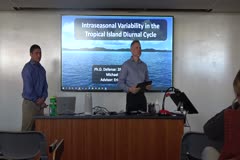
Intraseasonal Variability in the Tropical Island Diurnal Cycle
March 28, 2022
Michael Natoli
The relationship between large-scale intraseasonal variability in tropical convection and the local diurnal cycle on tropical islands is explored with observations and an idealized model. In part one, the impact of quasi-biweekly variability in the monsoon southwesterly winds on the precipitation diurnal cycle in the Philippines is examined using CMORPH precipitation, ERA5 reanalysis, and…

Aerosol size distribution changes in FIREX-AQ biomass burning plumes: the role of plume concentration on coagulation and OA condensation/evaporation
March 24, 2022
Nicole June
The evolution of organic aerosols and aerosol size distributions within smoke plumes are uncertain due to the variability in rates of coagulation and organic aerosol (OA) condensation/evaporation across different smoke plumes and potentially in different locations within a single plume. We use aircraft data from the western US portion of the FIREX-AQ campaign to evaluate differences in aerosol…
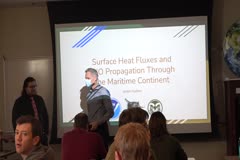
Surface Heat Fluxes and MJO Propagation Through the Maritime Continent
March 11, 2022
Justin Hudson
The ‘barrier effect’ of the Maritime Continent (MC) is a known hurdle in understanding the propagation of the Madden-Julian Oscillation (MJO). To understand the differing dynamics of MJO events that propagate versus stall over the MC, a new MJO tracking algorithm utilizing 30-96 day filtered NOAA Interpolated OLR anomalies is presented. Using this algorithm, MJO events can be identified,…
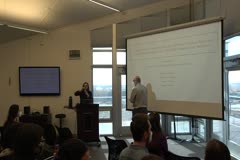
Composition of Fine Particles in Carlsbad Caverns National Park and Implications for Sources and Visibility Impacts
March 02, 2022
Lilly Naimie
Carlsbad Caverns National Park in southeastern New Mexico is adjacent to the Permian Basin, one of the most productive oil and gas regions in the country. The 2019 Carlsbad Caverns Air Quality Study (CarCavAQS) was designed to examine the influence of regional sources, including urban emissions, oil and gas development, wildfires, and soil dust on the park, including impacts on fine particle…
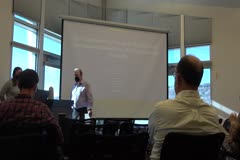
The Contribution of Clouds to Global Surface Temperature Variability on Monthly to Decadal Timescales
February 28, 2022
Chloe Boehm
Cloud radiative effects (CREs) have well documented impacts on the mean climate, and have recently been found to play a key role in climate variability in the tropics. This thesis expands on previous work to probe the role of CREs in extratropical surface temperature variability. The impact of CREs in climate variability is isolated using the ’cloud-locking’ method run on the Max Planck…
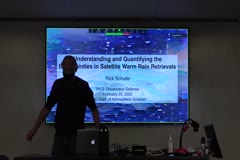
UNDERSTANDING AND QUANTIFYING THE UNCERTAINTIES IN SATELLITE WARM RAIN RETRIEVALS
February 25, 2022
Rick Schulte
Satellite-based oceanic precipitation estimates, particularly those derived from the Global Precipitation Measurement (GPM) satellite and CloudSat, suffer from significant disagreement over regions of the globe where warm rain processes are dominant. Part of the uncertainty stems from differing assumptions about drop size distributions (DSDs). Satellite radar-based retrieval algorithms rely on…

Assessing the State Dependency of Infrared Satellite Precipitation Retrieval Errors
February 10, 2022
Eric Goldenstern
The sensing and prediction of precipitation remains at the forefront of weather forecasting, building upon centuries of measurement and study. While in-situ and ground-based methodologies such as rain gauges and weather radars provide the best assessments of precipitation, they are prone to sampling issues and coverage gaps both over challenging terrain and in developing areas of the world. As…
